Breast Reduction
Breast reduction is about restoring a more normal proportion and shape to your body that can greatly improve your quality of life. The improvement in breast size and shape can have a very positive impact on body image and self-confidence and women who have had a reduction procedure will commonly state... 'I wish I'd done it years ago'.
During the surgery excess breast tissue and skin is removed to create a smaller more proportional breast size. This alleviates the discomfort associated with large or pendulous breasts.
Dr Januszkiewicz has more than 25 years of experience with this surgery helping women affected by large breasts aged from their teens through to their eighties. He will will listen carefully to your concerns and examine your breasts and upper body before recommending the procedure that will best meet your needs.
-
Where are you starting from?
No two people are the same - we all have different body types and different concerns and expectations. Your breasts may be different on each side and even the shape of your rib cage can be uneven.
- Your age:
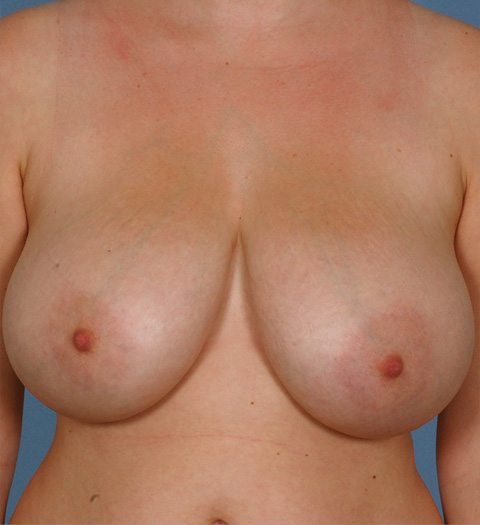
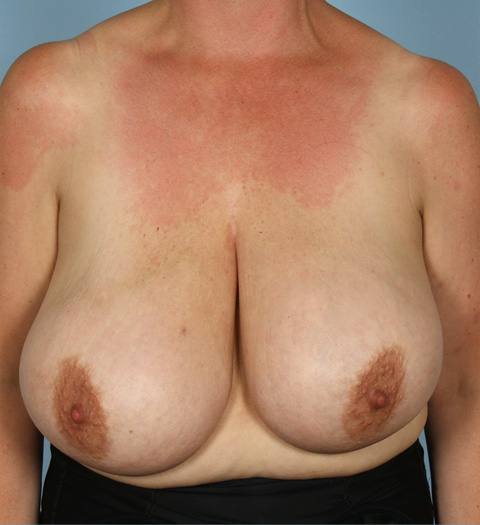
Younger women who have not had children will generally have better skin quality and firmer tissues. The incision lines can be minimized in some cases to limit the long term scaring. Breast feeding can still be possible in later years as breast tissue is left attached to the nipple-areola.
As time goes on tissue quality softens and there is more natural droop to larger breasts. Pregnancy and breast feeding will hasten these changes. Breast reduction will reduce size but also lift the tissues and reduce the diameter of the nipple-areola. The improvements after surgery can successfully last for many decades but of course can also be influenced by future weight changes, pregnancies, and menopause.
- Body weight:
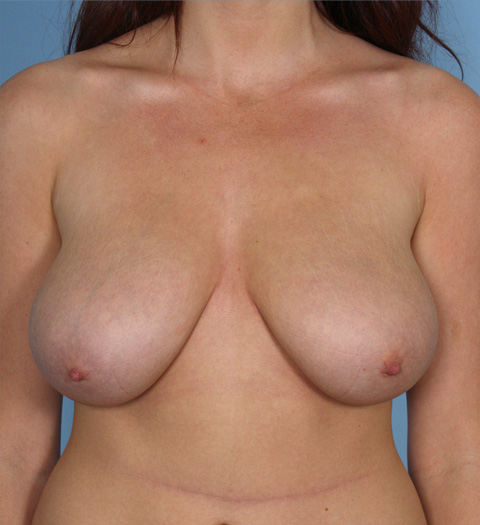
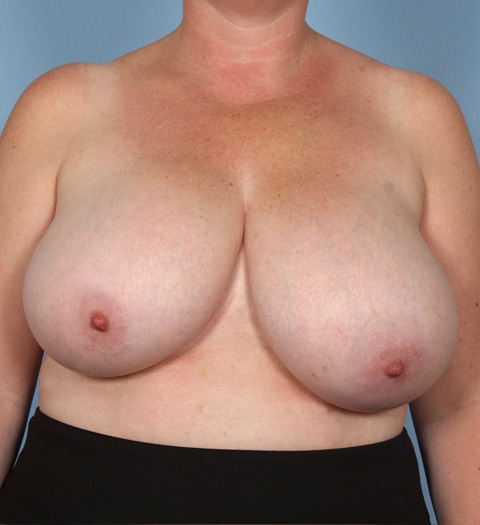
Slimmer or younger patients with large breasts typically have a higher proportion of dense breast gland tissue with much less fat present. Breast reduction is very successful in reducing and reshaping the tissues.
Larger women will carry a higher proportion of fat tissue within their breasts some of which reduces with overall weight loss.
While it is generally advisable to reach a healthier weight going into surgery this can be very difficult for the large breasted woman. Indeed in many cases even after significant weight loss the breast size remains frustratingly large. A breast reduction can help provide the freedom to exercise more comfortably and work towards achieving a healthy figure.
Some women are unfortunate enough to be well outside the normal range and may require between 1000 and 2000g of tissue removed from each side to restore them to a manageable cup size. In these more extreme circumstances the incision lines are usually longer and very occasionally the nipple-areola itself is removed and put back as a 'free graft' technique.- Size:
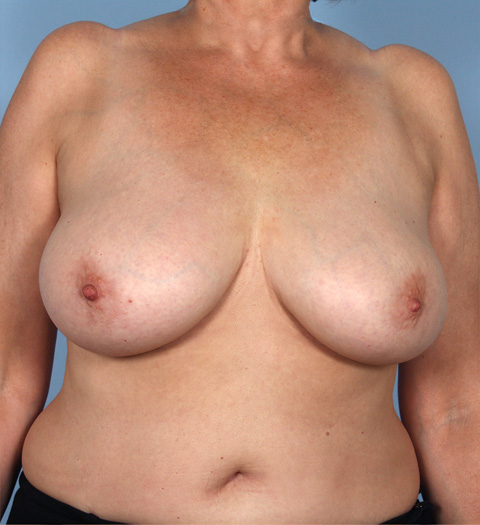
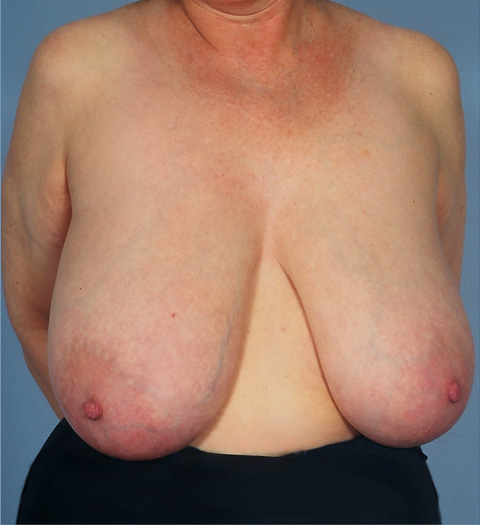
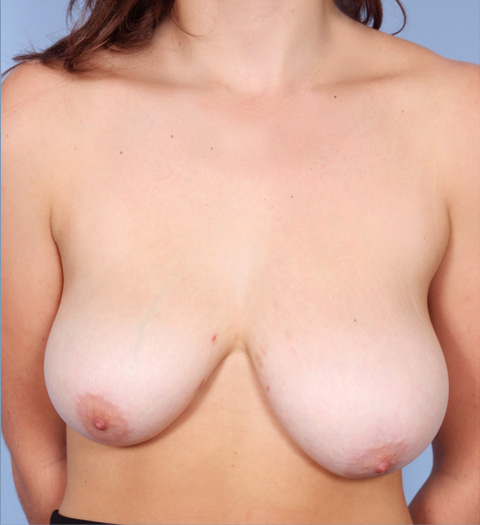
Cup size measurements can vary considerably depending on who is measuring you and what bra you buy. Most women seeking breast reduction are DD or larger and it is not uncommon for 500g or more of tissue to be removed from each side at surgery. The nipple-areola complex is left attached to your remaining breast tissue to help preserve sensation and lactation. Active smokers are at greater risk of blood supply or wound healing problems.
Some women are unfortunate enough to be well outside the normal range and may require between 1000 and 2000g of tissue removed from each side to restore them to a manageable cup size. In these more extreme circumstances the scars are usually longer and the nipple-areola itself is sometimes removed and put back as a free graft technique.
Many women have asymmetrical breasts but in some cases the differences can be extreme. This usually relates to developmental abnormalities, previous trauma or surgery for cancer. The decisions around how to treat each side can be complex but Dr Januszkiewicz has an extensive experience in all reconstructive and cosmetic breast surgery and is best qualified to guide you through the choices.
-
How will they look?
There are many factors that influence how your breasts will look afterwards.
You - The most important of these is what you are starting with (see above) – in other words your age and your anatomy. The size of your breasts and the quality of your tissues influence both the surgical technique and the result that can be achieved. Surgical planning starts on the basis of your own dimensions so that it suits your figure. It is advisable to reach as close to your ideal goal weight as possible before surgery. Weight loss afterwards can influence the shape of the long-term result. Patients with a body mass index below 30 reduce their surgical and anesthetic risks. Smoking increases the risk of problems with wound healing and infection. All patients are advised to quit smoking before surgery, as many weeks ahead as possible.
Surgical technique will be critical to achieving the best shape, and will be tailored according to your breast size, nipple position and how much tissue is being removed. If there is pre-existing unevenness or breast scarring the techniques may need adjustment. It is common to use liposuction technique during a breast reduction to help shape the lateral breast and chest wall. This will leave some bruising, swelling and discomfort at your sides.
In breast surgery there is an art as well as a science involved in pursuit of the optimal result. Dr Januszkiewicz has more than 25 years of experience and will help guide you through this process.
Go to our gallery to see examples of different breast reduction -
What's possible, what's not?
A breast reduction will both reduce and reshape the breast. It reduces physical discomfort, can improve your figure and lead to a better self-image or self confidence. However, as with any surgery, breast reduction has risks and possible complications. It is important to understand these fully. You will need to decide if the surgery can achieve your goals and if the risks and possible complications are acceptable to you. We will discuss all of this with you and answer any further questions you have.
Larger breasts generally require longer incision lines and more adjustment to the internal breast tissues. In some extremely large breasts the nipple areola is repositioned back on the breast as a graft.
Breast reduction cannot be guaranteed to last a lifetime however the results can be very long lasting. Over time your breasts will change and pregnancy, weight changes, menopause and ageing can all influence the results of your surgery. -
On the day
Please read your pre-operative instructions carefully as they contain important information about preparing for your surgery.
You will be asked to arrive for admission to the surgery complex or hospital at a time that allows the nursing staff to prepare you for surgery. Your family member or support person is encouraged to be with you at this stage. You will have time to discuss any last minute concerns with Dr Januszkiewicz before he draws the pre-surgical markings on you. The specialist doctor giving your anesthetic will also meet with you beforehand for a thorough discussion. -
After your procedure
After the surgery is complete you will wake up in the recovery area. Once you are more fully awake you should be able to sit up in a comfortable chair and have something to eat and drink. Some women will be suitable for day stay surgery and for others an overnight stay will be recommended. Once Dr Januszkiewicz and the nursing staff are happy that you are ready to be discharged a friend or family member can take you home. It is a good idea to have them bring a pillow so that you can use this under your seatbelt for comfort during the drive home. If your surgery has been done at another hospital and planned with an overnight stay you will usually be ready for discharge before 10am the next morning. If surgical drains are necessary they will usually be removed one or two days after surgery.
For patients who live out of town we can recommend and help pre-arrange hotel or motel accommodation nearby. If you are not staying in hospital overnight you must have a friend or family member stay with you for the first night.
Your breasts will be sore afterwards but the pain medication that has been prescribed will help and most women will report that the experience was easier than they expected.
We will see you again for a brief check in the first week after surgery and then usually once more around five weeks later. It usually take six weeks or so for the surgical swelling to settle and your breasts and the surrounding tissues will still be softening gradually over the first 3 months after surgery.
